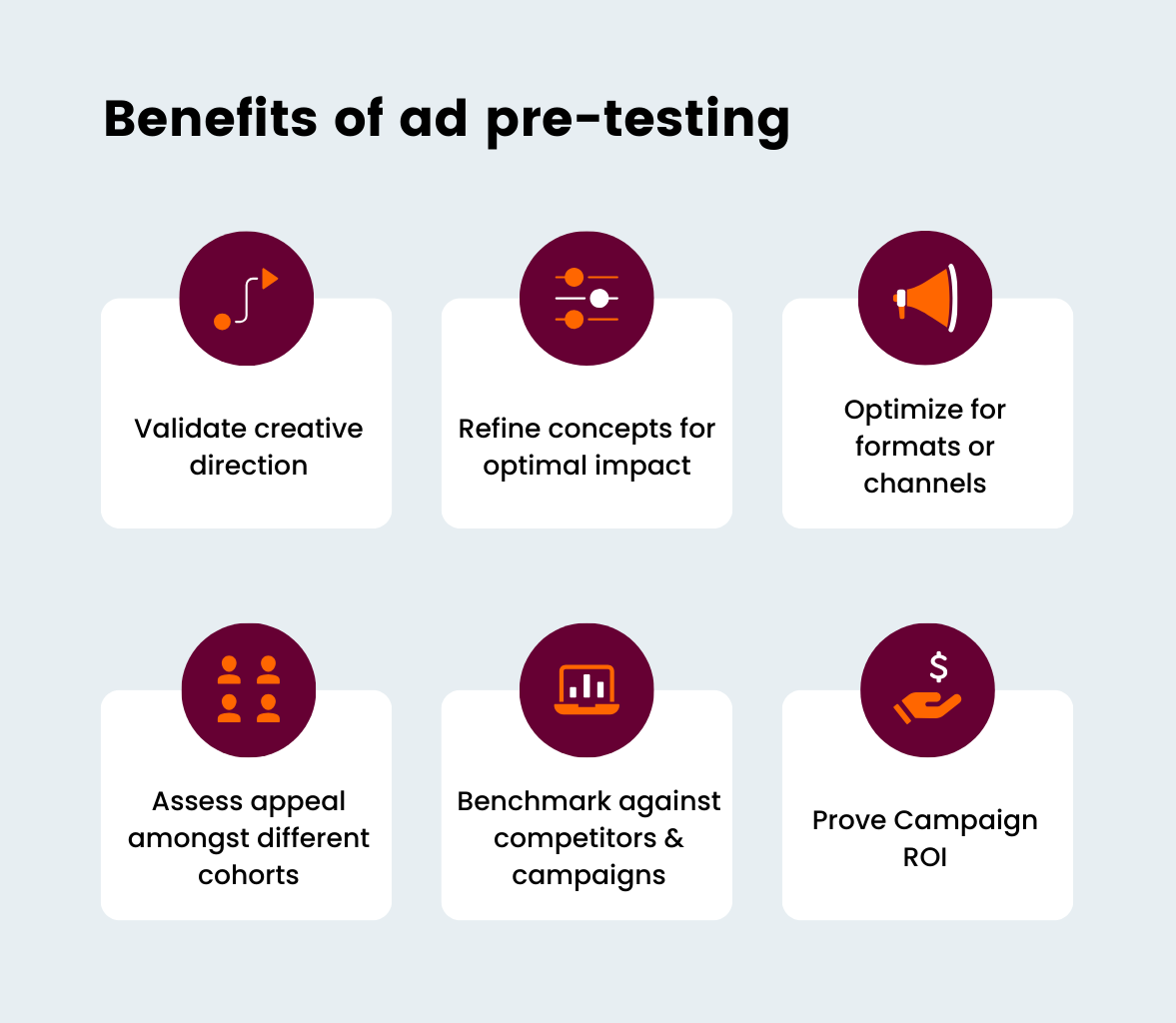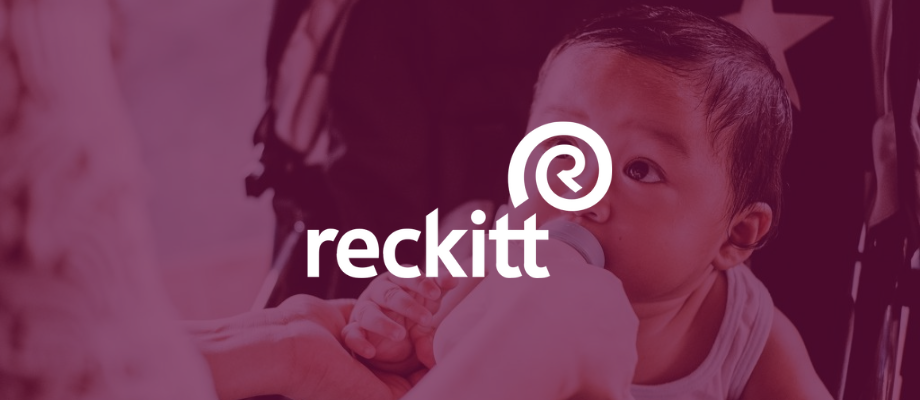Launching a marketing campaign is a major investment, so getting the creative right is crucial for success. In this ultimate guide to advertising pre-testing, we’ll address why it is important to test, explore challenges faced by advertisers, and outline how research can improve the impact of your campaigns.
The importance of ad pre-testing
You’re probably already well aware that advertising and communications consume the largest chunk of most marketing budgets, which in turn represent roughly 13% of company revenue on average.
So, with this in mind, it’s no surprise that launching an expensive marketing campaign can be daunting if you’re not 100% certain that your communications will resonate with your target audience.
What if your target audience is confused by the piece of communication? What if your message isn’t appealing? The tone is off? Or the branding poor?
There are many ways that a piece of communication can fall short of ideal. Any single one of these deficiencies can create thousands or even millions of dollars in lost opportunity, not to mention wasted time and resources.

This is why advertising and communications pre-testing exists – for peace of mind that you’ve ironed out all the kinks before you launch a new campaign. Research provides the confidence that your investment is going to deliver the returns you need.
What is ad pre-testing?
In the context of marketing, ad pre-testing is the process of evaluating your advertising and communications prior to rolling out your marketing campaign.
Through a process of qualitative and quantitative research, a brand can assess whether its latest campaign idea and specific executions, such as TV ads, billboards, or even social content, will have the desired effect on its target audience.
Qualitative research is best used to help explore and define different creative areas in support of validating the creative direction of the advertisement.
Quantitative research is usually used after the strategy has been defined to validate it with the desired target audience and to provide further input for refinement and optimization.
What questions can ad pre-testing answer?
There are a large number of areas where quantitative pre-testing can support the refinement and/or validation of concepts or finished creative assets. Here are just some of the questions that research at this stage can answer:
- Does the concept resonate with my target audience?
- Is the appeal stronger amongst different groups of people? (which often helps define the real audience for the product/service)
- Is the appeal consistent across geography or markets?
- What is appealing or unappealing about different elements of the communication e.g. message, visual stimulus, music etc?
- Have we recognized and reflected cultural nuances for different markets?
- How likely is the communication to motivate people to act?
- Is my branding effective?
- What are the best channels to use to reach my desired audience? (thinking beyond paid advertising channels to consider partnerships and earned media ideas)
You can see an example of what an ad pre-testing survey looks like on the Glow Platform here.
Case in point – Reckitt’s multi-market messaging test
Multinational consumer goods firm Reckitt needed data to assess and prioritize the messaging for Enfa, its main infant and toddler brand, which specializes in child nutrition products. Reckitt needed to determine if Enfa’s core brand messaging was on point across four key markets.
Specifically, Reckitt needed to know if the advertising and communications that Enfa was about to launch were relevant, believable, and would invoke purchase intent in these new markets. Given that time was a factor, Reckitt needed rapid-pace research to get these insights quickly.
Glow was able to provide a robust solution using its intuitive platform. In collaboration with Reckitt, Glow was able to create a questionnaire, develop a rotation methodology to avoid bias, and then translate and deploy the survey for four key markets (Mexico, Philippines, Thailand, and the United States)… all within a week.
Reckitt was able to review the data in real-time as respondents completed the surveys, enabling them to tweak the messages tested in each market based on feedback. That process enabled Reckitt to align its overall messaging across all markets, as well as optimize local messaging to reflect market, language, and cultural differences.
Considerations for ad-pre testing research
Measure ad campaigns holistically
Quantitative communications research can help you to validate or refine the go-to-market strategy before you launch a campaign. This will allow you to be confident the campaign will deliver on the investment behind it.
However, the best ad pre-testing practitioners take a holistic approach to assessing your campaign because the sales impacts of advertising activity have been proven to come from a mix of components. The creative (quality, messaging relevance, and context) is generally considered to account for over half the sales impact of advertising, while media (reach, targeting, and recency effects) drive around a third of impact, and brand affects the remainder. So, remember to ensure you are testing and validating all the components of your communications approach.
Ad testing doesn’t end at launch
Consumer behavior is a rapidly evolving phenomenon, regardless of what markets you’re communicating with. Once your marketing is out there, it’s important to continue monitoring its impact on your audience to see how it can be further optimized.
If you are about to launch a major campaign, it is good practice to ensure you are ready to measure its impact not only on hard measures like website visits and sales but also on softer brand health metrics such as awareness and consideration. To do this, many brands implement either a pre & post campaign effectiveness brand ‘dip’, or establish ongoing brand tracking research.
Ad pre-testing checklist
Here is a research considerations checklist to run through before you launch your next major campaign:
Test if – your campaign marketing spend is over $1M or you are investing over $100k in creative production, then plan to test it.
Time to optimize – allow 3-4 weeks for strategy/creative testing to ensure you have the time not only to field the research but to optimize your creative assets based on your learnings.

Assess holistically – make sure you are validating all the components of your campaign before you launch, including target audience, creative, and channels.

Account for culture – if you are running activity across different markets or distinct lifestyle or cultural groups, ensure you have tested those cohorts separately (in local language) to ensure you capture cultural and communication nuances. You don’t want to end up on this list.
Set benchmarks – ensure you have a clear read on brand health before you launch your new campaign so you can assess its impact on attitudes as well as sales.
Measure ongoing – your activity doesn’t happen in isolation, so ensure you measure your brand health and marketing impacts with a cadence that reflects the dynamics of your category.
Plan for problems – sometimes s#@t just happens. Make sure you’ve planned for challenges and can assess your research progress in real-time so that when things go wrong, or the data tells a story you weren’t expecting, you can respond quickly.
The ROI of ad pre-testing
The cost of advertising pre-testing research will normally be less than 5% of any major marketing campaign’s budget.
Would you pay 5% to ensure the remaining 95% is invested effectively?
Let's Glow.
Have an upcoming campaign that you want to test comms for? Or want to assess the impact of in-market activity? Glow empowers you to test strategy, evaluate concepts, and get your messaging right the first time, every time.
Speak to one of our research experts to see how you can improve your next campaign with real-time consumer insights – book a demo today.
Or get started yourself, with our Creative Testing Kit in the Glow Platform.


